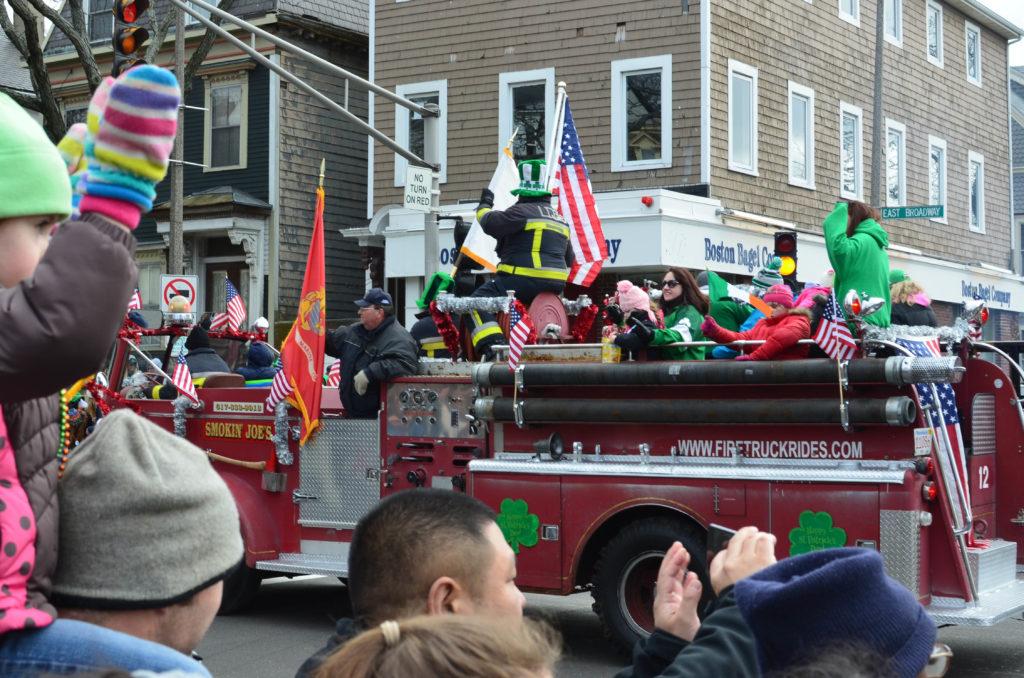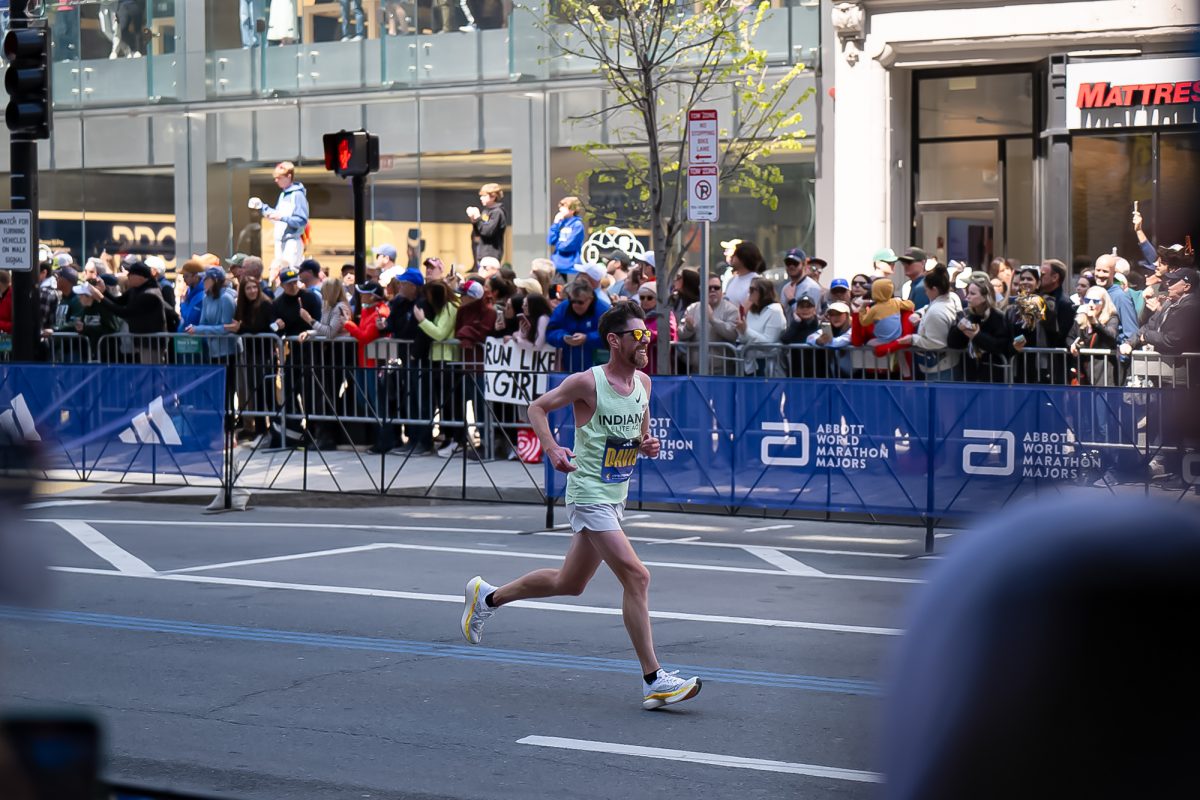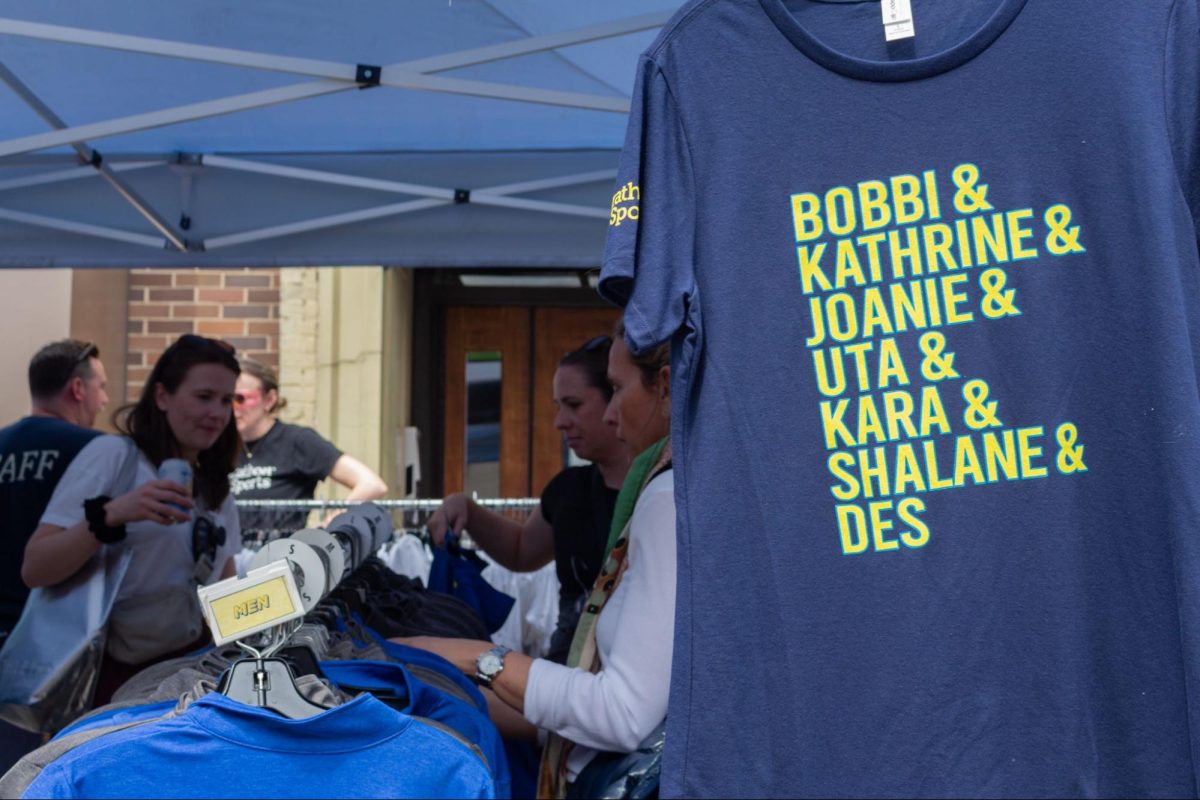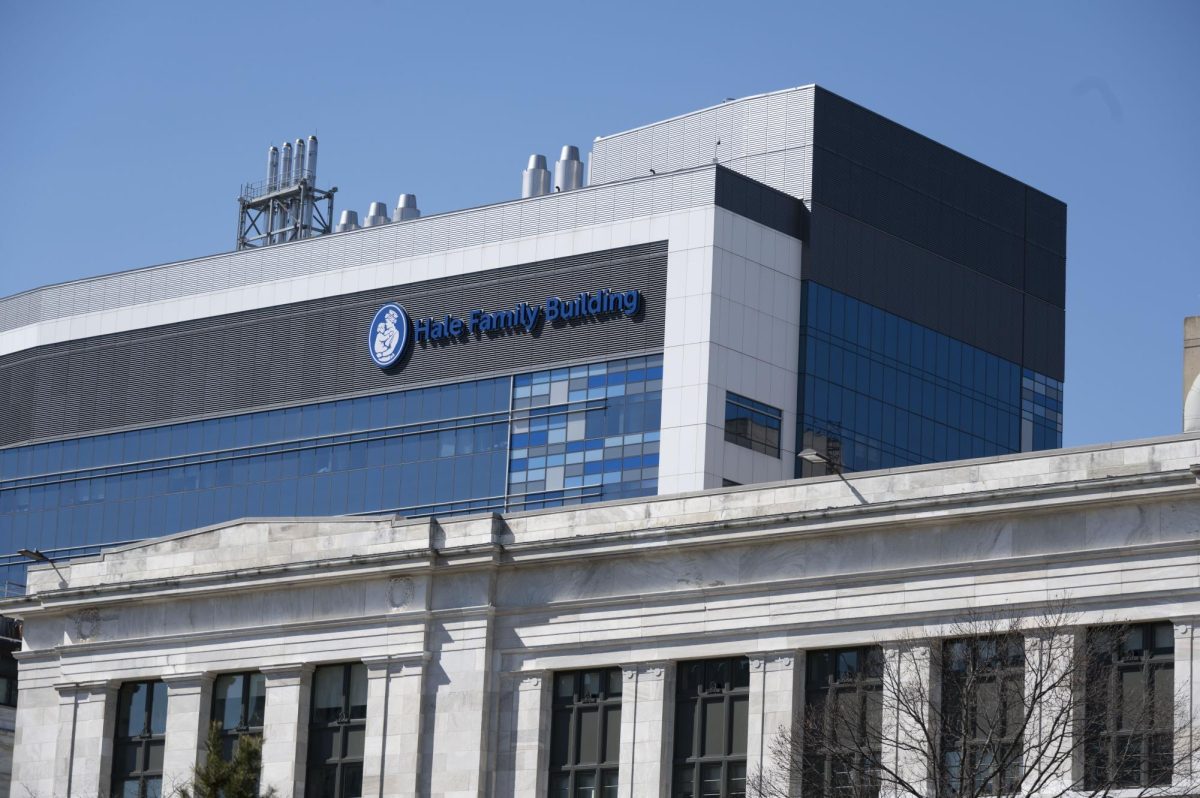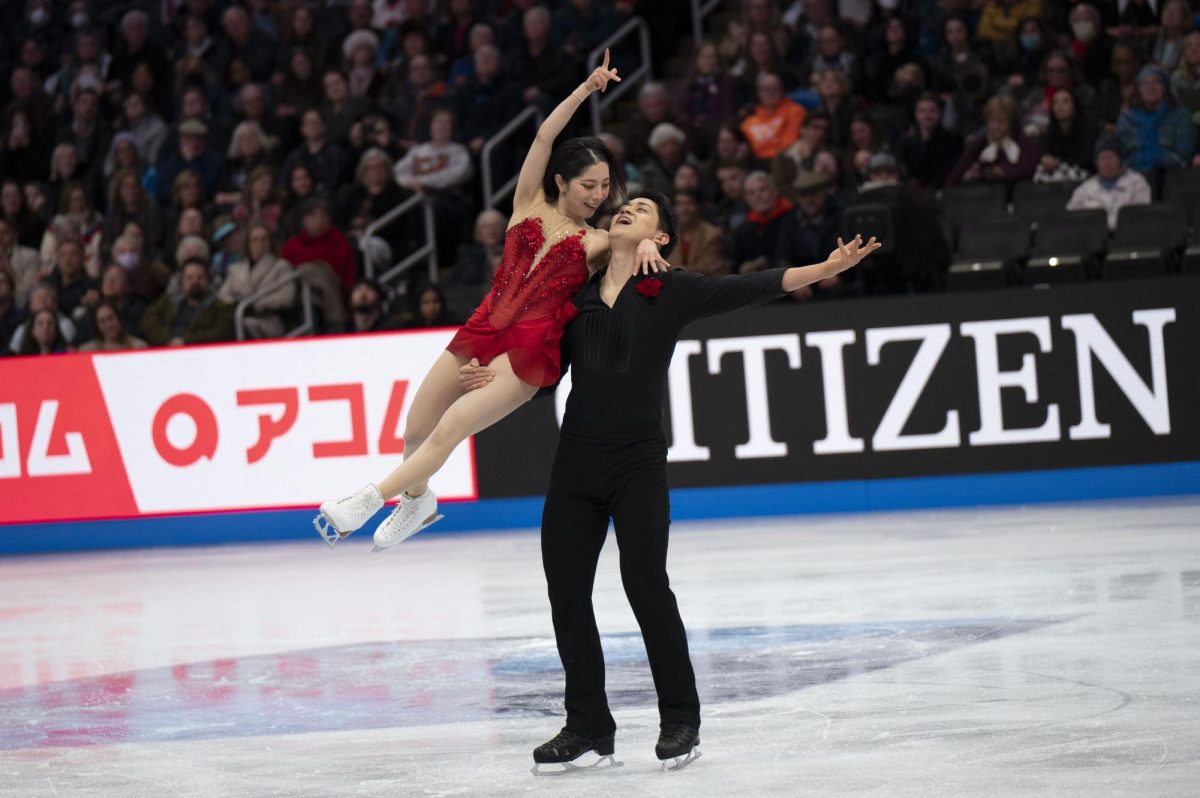By Audrey Cooney, news staff
Sunday’s St. Patrick’s Day Parade brought good weather, boisterous crowds and a quiet controversy surrounding one of Boston’s signature events.
The day was sunny but had a faint chill in the air – a group of young Irish dancers did jumping jacks to stay warm in their sequined dresses and poodle socks behind parade walker Jeff Pontiff.
“It’s always a good time,” said Pontiff, who marched with his group, the Friendly Sons of Saint Patrick. “We always worry a little bit about the weather, but today is just fine.”
Thousands of spectators – most decked out in green – lined the streets, even taking to rooftops in some places for a better view. Parents hoisted children onto their shoulders, college students moved down the sidewalk in throngs and vendors hawked green T-shirts with various slogans.
Boston police officers and firefighters led the parade, followed by Mayor Martin J. Walsh and Gov. Charlie Baker, who were accompanied by a squadron of bagpipers. Veterans groups, marching bands, military reenactors and horse-drawn carriages all drew enthusiastic cheers from the crowds. Hometown heroes The Dropkick Murphys elicited some extra enthusiasm, as the band cruised past the crowds blasting its song “State of Massachusetts.”
The event drew spectators from far-flung locales. Brid O’Kane of Limerick, Ireland attended with her husband and two sons. The two boys, Sean and Paul, held green pinwheels and stood on a fence to get a better look at the rows of bagpipers and military vehicles parading past.
O’Kane said both she and her husband had been to the United States before, but they wanted to spend St. Patrick’s day in Boston at least once. The couple took advantage of their sons’ aptly timed spring break to make a trip across the Atlantic.
“It’s bigger here,” she said, referring not just to the parade but also to the holiday in general. “At home, we have a very small parade, and sometimes there’s a band parade, usually the Sunday after St. Patrick’s Day.”
The parade, organized annually by the Allied War Veterans Council of South Boston, has been a part of Boston’s history for more than a century. Several controversies in recent years have roiled organizers and community members. Last year, OUTVETS, a group supporting LGBT veterans, participated in the parade for the first time and was the first openly LGBT group to be allowed to do so. The exclusion of pride groups had attracted the ire of Boston residents, including Walsh, who declined to march in the parade during his first year as mayor because of the ban.
This year, a proposed change to the parade route ignited a controversy that ended up before a US District Court, with a judge ruling that forcing parade organizers to shorten the route would impede on their First Amendment rights.
The proposal caused outrage among organizers of the parade. Chester Darling, a lawyer for the Allied War Veteran’s Council, told the Boston Globe earlier this month that Walsh’s attempt to shorten the route was an “abuse of discretion by a heavy-handed mayor.”
Despite the recent controversies, the event remained a festive affair. Haydee Hernandez and Paul Gruszka drove up from New Jersey for the weekend to visit their friend Lindsay Zaccardi, who lives on Cape Cod, and to celebrate the holiday.
“We’re loving it so far,” said Hernandez, adding that they had been to New York City’s parade many times but had never been to Boston before.
Zaccardi said the New York parade was bigger, but she and her friends agreed they would come back to Boston for future parades.
“It’s a great city, friendly people,” she said.
Photo by Camaryn McKenzie


